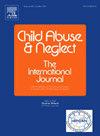逃离战争的儿童——探索2022年乌克兰冲突后抵达以色列的难民儿童的心理健康。
IF 3.4
2区 心理学
Q1 FAMILY STUDIES
引用次数: 0
摘要
背景:2022年2月,乌克兰遭受了俄罗斯的毁灭性袭击,导致破坏,人员伤亡和大规模流离失所。流离失所者中有150多万儿童。被迫流离失所使儿童面临更大的心理健康问题风险。目的:本研究调查了从乌克兰流离失所到以色列的难民儿童中创伤后应激障碍(PTSD)和其他心理健康问题的患病率。目的是确定影响PTSD发展的因素并探讨其相关性。方法:研究纳入了59名逃离乌克兰战争后抵达以色列的儿童难民。父母完成了自我报告问卷,以评估他们孩子的心理健康状况。结果:只有3名儿童符合PTSD的DSM诊断标准,负性认知和再体验类得分较高。超过一半的儿童表现出一般的心理健康问题,其中约40%表现为内化问题,30%表现为外化问题。该研究还发现,PTSD症状与内在问题之间存在显著的共病。此外,当考虑年龄、性别、经济状况、父母工作状况、内化问题和外化问题等因素时,内化问题成为PTSD水平的唯一显著预测因子。结论:难民儿童经常经历心理困扰,即使他们不符合PTSD的正式诊断标准。他们经常表现出其他痛苦症状,主要是内化问题,这可能很难发现。更深入地了解难民儿童面临的挑战,可以为东道国制定有针对性的援助计划以及招聘和培训人员提供信息。本文章由计算机程序翻译,如有差异,请以英文原文为准。
Reprint of Children Fleeing War-Exploring the Mental Health of Refugee Children Arriving in Israel after the Ukraine 2022 Conflict
Background
In February 2022, Ukraine suffered a devastating assault by Russia, leading to destruction, casualties, and mass displacement. Among those displaced were over 1.5 million children. Forced displacement exposes children to a heightened risk of mental health issues.
Objective
This study investigated the prevalence of Post-traumatic stress disorder (PTSD) and other mental health issues among child refugees shortly after their displacement from Ukraine to Israel. It aimed to identify factors influencing PTSD development and explore their associations.
Methods
The study included 59 child refugees who had arrived in Israel after fleeing the war in Ukraine. Parents completed self-report questionnaires to assess their children's mental health.
Results
Only three children met the DSM diagnostic criteria for PTSD, with higher scores in the negative cognition and re-experiencing clusters. Over half of the children exhibited general mental health problems, with approximately 40 % showing internalizing problems, and 30 % showing externalizing problems. The study also found a significant comorbidity between PTSD symptoms and internalizing problems. Additionally, internalizing problems emerged as the sole significant predictor of PTSD levels when considering factors such as age, gender, economic status, parents' work status, internalizing problems, and externalizing problems.
Conclusions
Child refugees frequently experience psychological distress, even if they do not meet the formal diagnostic criteria for PTSD. They often exhibit other distress symptoms, primarily internalizing problems, which can be challenging to detect. A deeper understanding of the challenges faced by refugee children can inform the development of targeted assistance programs and the recruitment and training of personnel in host countries.
求助全文
通过发布文献求助,成功后即可免费获取论文全文。
去求助
来源期刊

Child Abuse & Neglect
Multiple-
CiteScore
7.40
自引率
10.40%
发文量
397
期刊介绍:
Official Publication of the International Society for Prevention of Child Abuse and Neglect. Child Abuse & Neglect The International Journal, provides an international, multidisciplinary forum on all aspects of child abuse and neglect, with special emphasis on prevention and treatment; the scope extends further to all those aspects of life which either favor or hinder child development. While contributions will primarily be from the fields of psychology, psychiatry, social work, medicine, nursing, law enforcement, legislature, education, and anthropology, the Journal encourages the concerned lay individual and child-oriented advocate organizations to contribute.
 求助内容:
求助内容: 应助结果提醒方式:
应助结果提醒方式:


